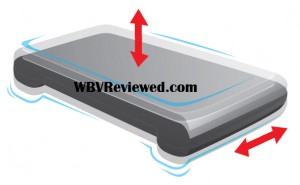What is Triplanar Vibration?
 Pivotal and lineal vibration has been around for an extremely long time and in order to experiment with alternate vibration types, some companies developed triplanar vibration.
Pivotal and lineal vibration has been around for an extremely long time and in order to experiment with alternate vibration types, some companies developed triplanar vibration.
Triplanar vibration is very similar to lineal vibration and may sometimes be referred to as a linear platform. However, the difference in the two is the way the platform is driven. The motors and pulley systems that power the two different vibrations are designed very differently but feel slightly similar.
The reason it is called triplanar is because the vibrating platform does not move just vertically up and down — it also moves horizontally. You can think of it as moving in a circular fashion while moving up and down ever so subtly. It is commonly referred to as “spiral vibration” because of the way the platform moves, although there is a difference in how the motor drives the triplanar or spiral motion. These systems offer a fairly wide frequency range with a lower amplitude ranging from 2-4 mm.
Higher frequencies tire your muscles faster because of the faster muscle contractions and relaxations, and therefore, you may feel your muscles getting extremely tight after just 1 to 2 minutes of this harder workout. As a consequence, triplanar vibration becomes more efficient compared to pivotal vibration machines in building muscle strength, and ultimately, improving bone health. In addition, because of the wider range of frequencies, triplanar vibration can give rise to head vibration, kind of like a ringing to the head when you lie your head against the window in a moving bus or car. Triplanar vibration machines tend to be more expensive then pivotal machines because it is a relatively newer technology and usually feature higher weight capacity, and more features and functions, and designed for high traffic gyms and fitness centers.
